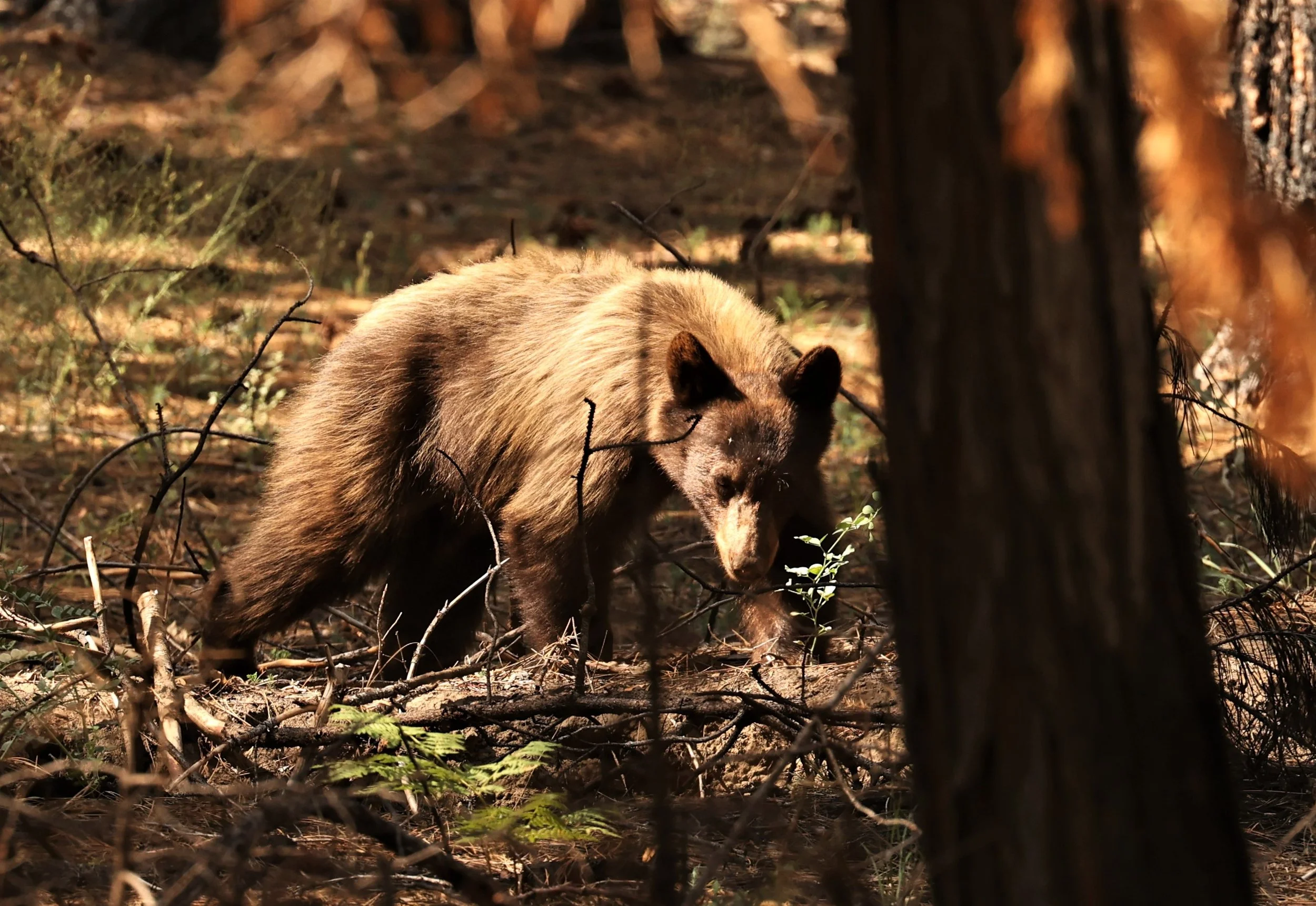
Ursus americanus American Black Bear
Red is present range, Pink is historic range
The American black bear (Ursus americanus), or simply Black Bear, is a medium-sized bear endemic to North America. It is the continent's smallest and most widely distributed bear species. American black bears are omnivores, with their diets varying greatly depending on season and location. They typically live in largely forested areas, but will leave forests in search of food, and are sometimes attracted to human communities due to the immediate availability of food. Despite the name, some subspecies can be brown or even blond in coloration.
The International Union for Conservation of Nature (IUCN) lists the American black bear as a least-concern species, due to its widespread distribution and a large population estimated to be twice that of all other bear species combined. Along with the Brown Bear (Ursus arctos), it is one of only two modern bear species not considered by the IUCN to be globally threatened with extinction.
Historically, American black bears occupied the majority of North America's forested regions. Today, they are primarily limited to sparsely settled, forested areas. American black bears currently inhabit much of their original Canadian range, though they seldom occur in the southern farmlands of Alberta, Saskatchewan and Manitoba; they have been extirpated on Prince Edward Island since 1937. The total Canadian black bear population is between 396,000 and 476,000, based on surveys taken in the mid-1990s in seven Canadian provinces, though this estimate excludes American black bear populations in New Brunswick, the Northwest Territories, Nova Scotia and Saskatchewan. All provinces indicated stable populations of American black bears over the last decade.
The current range of American black bears in the United States is constant throughout most of the Northeast and within the Appalachian Mountains almost continuously from Maine to northern Georgia, the northern Midwest, the Rocky Mountain region, the West Coast and Alaska. However, it becomes increasingly fragmented or absent in other regions. Despite this, American black bears in those areas seem to have expanded their range during the last decade, such as with recent sightings in Ohio, Illinois, and southern Indiana. Sightings of itinerant American black bears in the Driftless Area of southeastern Minnesota, northeastern Iowa, and southwestern Wisconsin are common. In the spring of 2019, biologists with the Iowa Department of Natural Resources confirmed documentation of an American black bear living year-round in woodlands near the town of Decorah in northeastern Iowa, believed to be the first instance of a resident black bear in Iowa since the 1880s.
Olympic Black Bear on Hurricane Ridge, Olympic National Park, Washington
Surveys taken from 35 states in the early 1990s indicate that American black bears are either stable or increasing, except in Idaho and New Mexico. The overall population of American black bears in the United States has been estimated to range between 339,000 and 465,000,[36] though this excludes populations from Alaska, Idaho, South Dakota, Texas and Wyoming, whose population sizes are unknown. In the state of California, there are an estimated 25,000-35,000 American black bears, making it the largest population of the species in the contiguous United States.
As of 1993, known Mexican black bear populations existed in four areas, though knowledge on the distribution of populations outside those areas has not been updated since 1959. Mexico is the only country where the American black bear is classified as "endangered".
There have been several sightings quite far away from where the American black bear is normally found, such as western Nebraska.
There are about 1,500 bears in Great Smoky Mountains National Park. The population density is about two per square mile. They inhabit all elevations in the park.
Throughout their range, habitats preferred by American black bears have a few shared characteristics. They are often found in areas with relatively inaccessible terrain, thick understory vegetation and large quantities of edible material (especially masts). The adaptation to woodlands and thick vegetation in this species may have originally been due to the American black bear having evolved alongside larger, more aggressive bear species, such as the extinct giant short-faced bear and the still-living grizzly bear, that monopolized more open habitats and the historic presence of larger predators, such as Smilodon and the American lion, that could have preyed on American black bears. Although found in the largest numbers in wild, undisturbed areas and rural regions, American black bears can adapt to surviving in some numbers in peri-urban regions, as long as they contain easily accessible foods and some vegetative coverage.
Kermode Black Bear coastal British Columbia





















































































































































































































































































